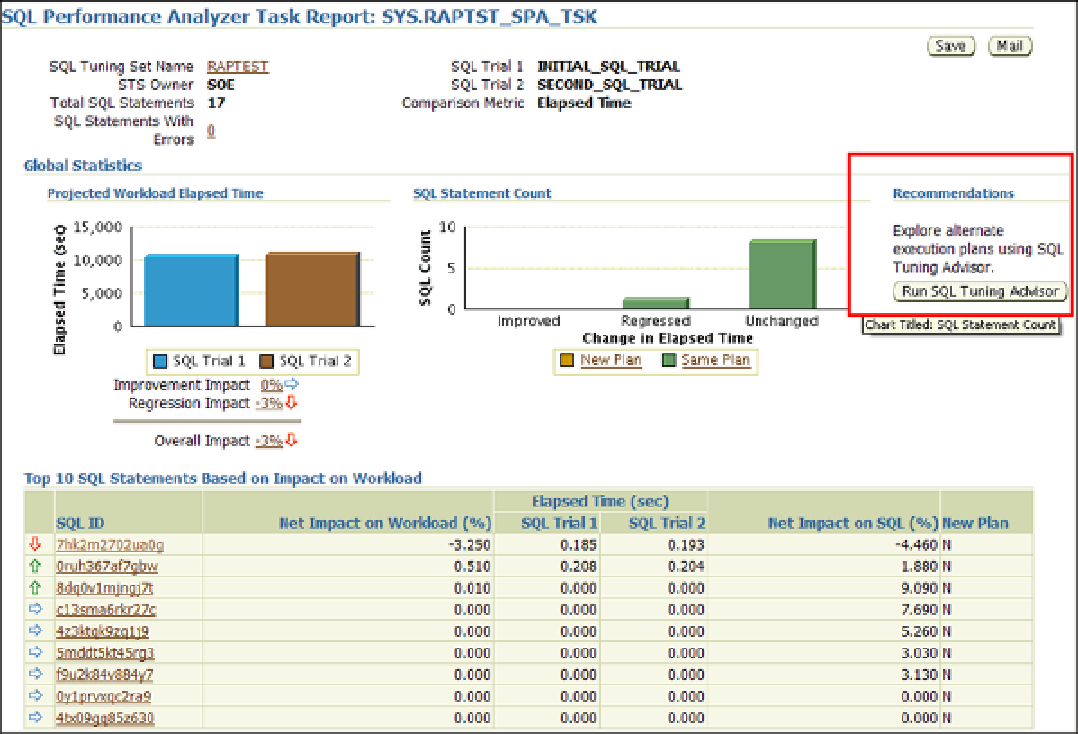Database Reference
In-Depth Information
Figure 5-34.
OEM—SPA to SQL Tuning Advisor
Once the query is tuned using the SQL tuning advisor or by rewriting the query after generating an xplan, the
query should be deployed back into the test environment and testing performed. As discussed at several previous
occasions, it's an iterative process. The goal of all this testing is to ensure that the migration from a single instance or
after an application change has been made, the application and database perform.
Conclusion
In this chapter, we discussed RAP Testing Phase VI by testing the persistence layer of the application tier. We discussed
and analyzed the use of the tools to complete this task and demonstrated the use of RAT for this purpose. Although
RAT is pretty robust and provides a very high level out-of-the-box test to compare the current production to the new
production or an application that has changes or between database software versions, it does not really provide the
full potential to accelerate the load by scaling the number of users or sessions as additional nodes are being added to
the cluster. Method I discussed in this chapter maybe the approach that will accomplish this task.
A combination of Methods I and II maybe required for a complete test of the database for scalability.
The focus of this chapter was to use RAT for scalability testing of the environment when moving from a single
instance to a RAC environment or testing a specific query for scalability using SAP. However, RAT can also be
used when performing upgrades, to test the effect of the database kernel changes, or to test the effect of database
optimization in a newer version of the database: for example, when migrating from Oracle database 10g Release 2 or
Oracle Database 11g Release 2 to Oracle Database 12c Release 1.

Search WWH ::

Custom Search